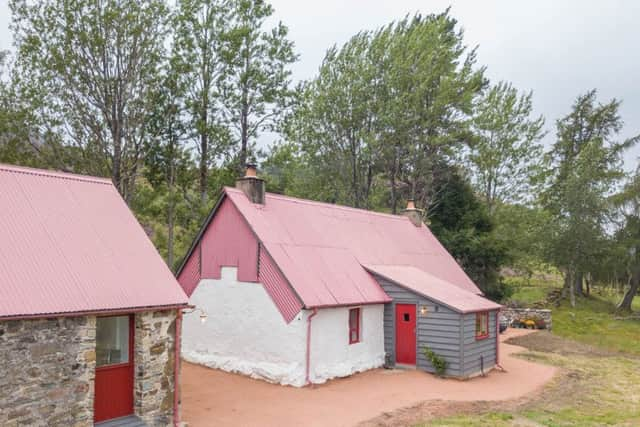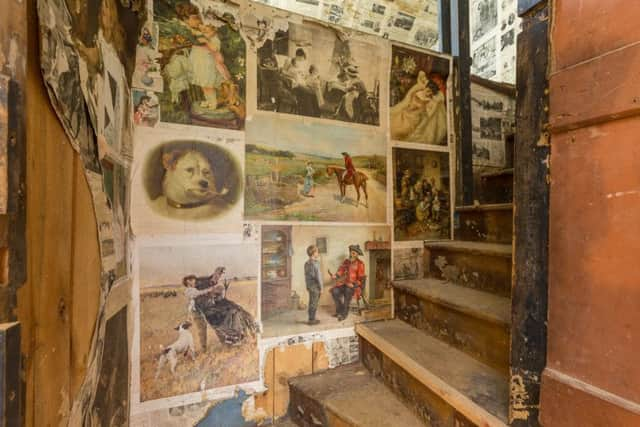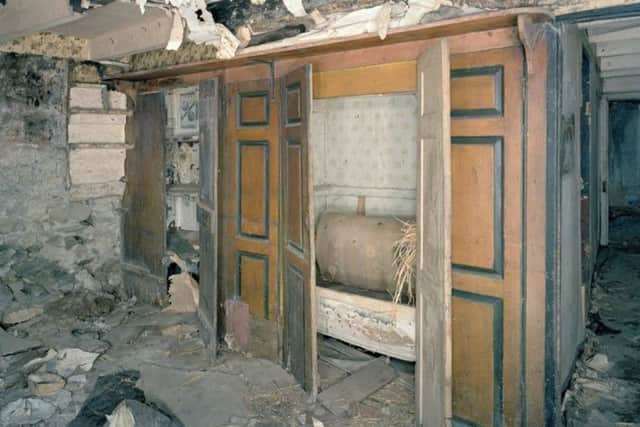The 'lost' Highland croft saved in tribute to its past


Downie’s Cottage near Braemar was built in the mid 1850s but was last inhabited in 1930 when its last tenant, James Downie, died.
It was almost lost from view after becoming surrounded by a ring of trees with new owners, Jackie and Calum Innes, due to demolish the cottage to make way for a new family home on the three-acre site.
Advertisement
Hide AdAdvertisement
Hide Ad

But after stepping inside, the significance of the cottage as a monument to a life one lived in the corner of Scotland quickly came to light.
Box beds with straw mattresses were still in place, as was the large ‘hanging lum’ - a chimney flu made of timber that was typical of 19th Century homes in rural Scotland.
Personal items were also found, from items of clothing and old boots to boxes of old Christmas cards and little pieces of ribbons stowed away in tins as keepsakes.


Upstairs, pages from old magazines and newspapers lined the walls, probably to protect from draughts but perhaps also to decorate.
A horse-drawn sledge to navigate wintry conditions was also discovered.
In light of the finds, Historic Environment Scotland was contacted and Downie’s Cottage was quickly given Grade A listed status.
The property is now viewed as “building of national importance” and an “exceptionally rare” surviving example of this type of rural building in the north east of Scotland.
Advertisement
Hide AdAdvertisement
Hide Ad

The original plan to flatten the cottage was replaced with a vast restoration project which has been guided by HES.
Now complete, Jackie Innes said the restoration project had become a “labour of love” with “blood, sweat and tears” shed in the process.
She added: “It hasn’t made any sense in terms of effort or money but we feel that we have done the right thing.”
A turning point in the future of the cottage came when the new owners were contacted by Mrs Catherine MacDougall, an elderly woman in California.


Her father, James McGregor, had continued to farm the land around the cottage following the death of James Downie, his uncle.
Ms MacDougall, who left Scotland following WWII and married an American airman, was able to share a collection of family photographs taken at the cottage, which brought the human history of the property further to life.
Other remarkable records of Downie’s Cottage exist, including a late 19th Century painting by Romantic artist Miles Birket-Foster.
Advertisement
Hide AdAdvertisement
Hide AdWriter and poet Nan Shepherd also wrote a magazine article about the cottage and McGregor, a well- known figure in the area regarded for his true love of the land, who died in 1960.
Following its restoration, Downie’s Cottage - built on what is believed to have been Scotland’s highest piece of farmland - will open up for a new generation as a holiday home.
The hanging lum remains as the centre piece of the cottage and the box beds, instead of holding straw, are now fitted with upholstered mattresses and a scattering of cashmere cushions.


Heating is provided by a ground source pump with the cottage having electricity and plumbing for the first time. A television is hidden away in a cupboard, which retains its original doors, and part of the byre has been converted into a sauna.
An outdoor hot tub, heated by wood fire, adds another modern dimension to the cottage, which sits up a track in Cairngorms National Park.
Historic Environment Scotland has praised the restoration at Downie’s Cottage, which retains its roof of heather thatch and corrugated iron.
In his report on the project, Roger Curtis of HES said; “Woven into this refurbishment has been an
Advertisement
Hide AdAdvertisement
Hide Adappreciation of the people who lived there and how such links connect us with a way
of life that lies at some distance from our own.”
Mrs MacDougall was never able to return to Downie’s Cottage and sadly died in April. However, it is believed that her family may bring her ashes back to Scotland to be scattered close to her family’s former home.
Just this week, her relatives sent plates that were originally from the cottage back to Scotland to go on display once again.
An open day will be held at Downie’s Cottage on Sunday, September 10.
